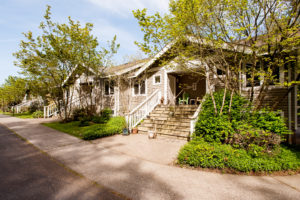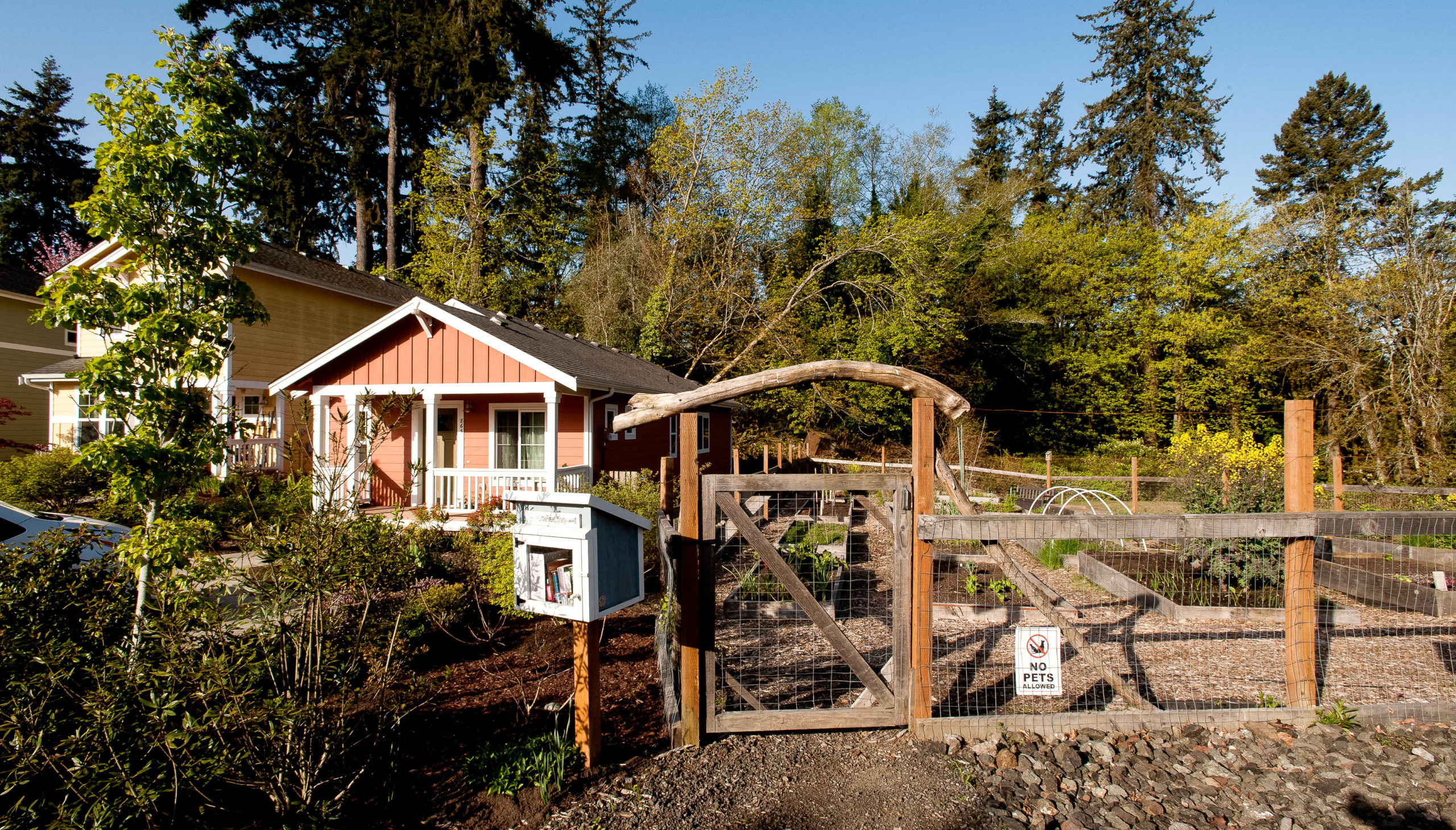We conserve, as well as develop. We are stewards, as well as realtors. We are a community land trust, and our affordable homes are here forever.
As a community land trust, HRB conserves and stewards land. But unlike our friends at the Bainbridge Island Land Trust, who conserve land to stave off development and protect ecosystems, HRB conserves land to develop affordable housing and protect the economic diversity of the island. We steward this land and these homes so that they can provide quality housing opportunities and serve the Bainbridge community in perpetuity.
Land is expensive. Housing is in short supply. And real estate on Bainbridge has become prohibitive to all but the most affluent. It takes ingenuity, an eye for opportunity, and careful oversight to create and maintain affordable housing, all of which come together in the community land trust (CLT) model.
How CLTs work
CLTs achieve affordability by removing the value of the land from the price of the home. At the 6-acre, 40-home Ferncliff Village, HRB retains ownership of the land, selling only the home and leasing the land to the owner for a 99-year term. Most of these homes requires that buyers earn below 80% of the area median income (approximately $73,000 for a family of four). When it comes time to move, owners must sell to another income-qualified buyer at a price determined by a formula in the ground lease. The formula guarantees a modest rate of return for the seller and an affordable price for the buyer.
The CLT model of permanent affordability makes effective use of limited resources. There have been a number of well-intended developments on Bainbridge Island with houses designated as affordable. But as there was nothing to prevent people from selling at the going rate, these homes were quickly absorbed by the island’s high-priced real estate market, necessitating that more homes be built to replace them.
A model of stewardship
CLTs work because they are stewarded. The purchase and sale of all homes are overseen by HRB staff, ensuring that income qualifications are met and that sale prices remain affordable. Moreover, the homes in our CLT are in excellent condition in part because staff work with owners to ensure that they set aside funds for maintenance and perform timely repairs. HRB plays an active role in the homeowner’s association, working with residents to manage common spaces and expenses.
 HRB stewardship extends beyond the sale of homes and the protection of our housing stock. We serve as a support to individual households, perhaps even providing a short-term loan to cover income loss that could result in foreclosure. And we work with prospective buyers on the waitlist, helping them with budgeting, debt reduction, and credit scores; educating them on the responsibilities of CLT homeownership; and helping to find down payment resources if necessary. We care about properties—and people.
HRB stewardship extends beyond the sale of homes and the protection of our housing stock. We serve as a support to individual households, perhaps even providing a short-term loan to cover income loss that could result in foreclosure. And we work with prospective buyers on the waitlist, helping them with budgeting, debt reduction, and credit scores; educating them on the responsibilities of CLT homeownership; and helping to find down payment resources if necessary. We care about properties—and people.
An idea born in the rural South
The first CLT grew out of the southern civil rights movement. A group of eight activists and leaders sought to secure land for Black sharecroppers who had lost their homes when they registered to vote. They traveled to Israel to learn about the moshavs, agricultural cooperatives which operate on land leased from the Jewish National Fund, and adapted the model at home. New Communities, Inc. in Lee County, Georgia, which combined community ownership of land with individual ownership of houses, was founded in 1969, and at 5,735 acres it was the largest Black-owned tract of land in the country. In 1981 a severe drought hit the area. An application to the US Department of Agriculture for emergency funds was denied, and in 1985 New Communities foreclosed. A 1999 lawsuit ruled that the denial was discriminatory, and the settlement was used to purchase the 1,638-acre Cypress Pond Plantation property, the present-day incarnation of New Communities.
Today there are between 225 and 300 CLTs in the nation, with 13 in Washington. HRB is the fifth largest in the state.
Our Bainbridge Island CLT
Turn into Ferncliff Village onto Curtis Loop, named for Lois and King Curtis who donated the land to HRB, and your first impression will be of land—the hills so typical of Bainbridge cut by terraces and staircases and leveled by raised beds of flowers and vegetables. Most of HRB properties, however, are located in the Winslow core, but they, too, are part of the HRB community land trust. Everything begins with the opportunity of land, be it from the generosity of a community member or an agreement with a developer, the expanse of Ferncliff Village or the tight blocks of downtown. What happens next and forever after is a matter of conservation and stewardship.
